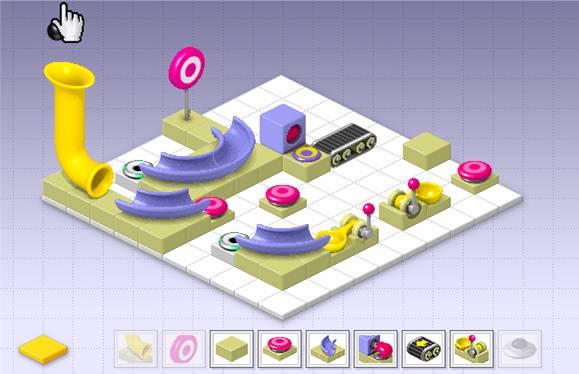EGGLES!
As identified in initial brainstorming, the aim of the game will be to set up a chain of events with the goal of hitting a final trigger point. If any of the events fail, the trigger will not be hit.
The primary mechanic will be based on Weebles: small egg-shaped toys popular in the 1970s & 80s, they wobble around on their base but stay upright due to a low centre-of-gravity. Available in a range of characters, they come with playsets allowing them to be used like dolls or (limited) action figures.
Weebles originate from America and are based on based 'Punching Clown' toys featured on a long-running TV show called Romper Room. They were developed by Playskool toys (part of Milton Bradley and later Hasbro) but sold in the UK by Airfix.
Airfix Weebles had a very different appearance to their American cousins: rather than having a uniform egg shape, they were moulded to character designs using pink plastic.
Following a brief flirtation with "New Generation" Weebles, they appear to have reverted universally to the US version with clear plastic and flat faces.
I'm going to use the Airfix pink Weebles for my game, as they will hit the main nostalgia triggers for my older target audience, yet will be recognisable as Weebles to younger players.
Airfix Weebles had a very different appearance to their American cousins: rather than having a uniform egg shape, they were moulded to character designs using pink plastic.
Following a brief flirtation with "New Generation" Weebles, they appear to have reverted universally to the US version with clear plastic and flat faces.
I'm going to use the Airfix pink Weebles for my game, as they will hit the main nostalgia triggers for my older target audience, yet will be recognisable as Weebles to younger players.
The main inspiration for the whole game mechanic comes from my sister Julia's Weebles Daredevils Circus set. This set included a spring-loaded cannon, hoops, see-saw, diving board, trampoline and stilts. We would set these up -- with other toys, occsionally -- to form a contraption-style chain of events: the cannon Weeble would hit the stilts, knocking them over; this would then knock the diving board, which would topple a Weeble onto the to trampoline, etc.
Now, there is a slight problem with this whole concept ... and that is the name. "Weebles" is trademarked by Hasbro, so I needed a new name. After a fair bit of brainstorming and throwing out ideas, I came to settle on "Eggles". My wife suggested a catchphrase, and the whole thing took shape:
Eggles waggle, but they don't fall 'ova'.
One of the key aspects of Eggles is that they don't tumble (not at least without a lot of help). That means that they move by falling, sliding or wobbling (i.e. domino-style cascade of movement).
Planning
So what other objects would be needed to build a contraption? I've drawn up a very short initial list of items which are immediately useful. Obviously this will expand dramatically in later phases.
I'm using a finger to start the whole process rolling (no pun intended). At some stage I'll try to find a more nostalgic alternative, but it'll do for now.
The Big Trak will form a tool to get longer horizontal movement. Again, to avoid trademark & copyright infringement I'll rename it as "Space Truk" and change the appearance a little.
Finally, for vertical movement I'm currently using an alien jumping toy (sprung-loaded with sucker, and with long wobbly arms).
Other items being considered include Evil Knievel's motorbike (which will need winding up -- the player could do this as live interaction), plastic parachuting soldier, the Weeble cannon, and others like see-saw, trapeze and domino toppling.
Having created a quick rigid-body physics test video on Maya, the next post will catalogue the final part of Phase 1 where I will create physics simulations in the Unity engine.




















